You are using an out of date browser. It may not display this or other websites correctly.
You should upgrade or use an alternative browser.
You should upgrade or use an alternative browser.
Updates Mission to a Hidden Ocean: The Europa Clipper
- Thread starter Unstung
- Start date
- Joined
- Feb 6, 2008
- Messages
- 37,605
- Reaction score
- 2,327
- Points
- 203
- Location
- Wolfsburg
- Preferred Pronouns
- Sire
I agree.
What about a non-plutonium RTG? I heard something about Americium-241. It is far less efficient than plutonium, but cheaper and easiest to produce.
And also far less suitable for spaceflight applications, since it produces only 1/4th of the power of Pu and generates more harmful radiation that must be shielded for not disturbing science.
K_Jameson
Active member
- Joined
- Dec 30, 2009
- Messages
- 1,064
- Reaction score
- 3
- Points
- 38
Indeed. Is what i said. Nevertheless, Americium is taken into account for space applications.
http://www.lpi.usra.edu/meetings/nets2012/pdf/3043.pdf
"While the specific power of a 241Am fuelled RTG is unlikely to match that of 238Pu fuelled units (except perhaps at small size) the design work undertaken provides confidence in the capability and performance of potential 241Am systems for future space mission opportunities."
http://www.lpi.usra.edu/meetings/nets2012/pdf/3043.pdf
"While the specific power of a 241Am fuelled RTG is unlikely to match that of 238Pu fuelled units (except perhaps at small size) the design work undertaken provides confidence in the capability and performance of potential 241Am systems for future space mission opportunities."
- Joined
- Feb 6, 2008
- Messages
- 37,605
- Reaction score
- 2,327
- Points
- 203
- Location
- Wolfsburg
- Preferred Pronouns
- Sire
Yeah, but the feasibility for spaceflight does not mean that they are automatically better than other energy sources. It just means that they are qualified to be even considered as alternative.
K_Jameson
Active member
- Joined
- Dec 30, 2009
- Messages
- 1,064
- Reaction score
- 3
- Points
- 38
Yeah, but the feasibility for spaceflight does not mean that they are automatically better than other energy sources.
I don't say that Americium is automatically the better alternative... only that is AN alternative... ;-)
Last edited:
- Joined
- Feb 6, 2008
- Messages
- 37,605
- Reaction score
- 2,327
- Points
- 203
- Location
- Wolfsburg
- Preferred Pronouns
- Sire
I don't say that Americium is automatically the better alternative... only that is AN alternative... ;-)
Well, gotcha.
I just dislike the decay chains for Americium - that's really a problem.
- Joined
- Feb 6, 2008
- Messages
- 37,605
- Reaction score
- 2,327
- Points
- 203
- Location
- Wolfsburg
- Preferred Pronouns
- Sire
:yes:
We have other radioactive materials suitable to be used in RTG?
Not that many. Sr90 is pretty popular for Russian RTGs, but those have a pretty short service life and very low power as well.
Pu is the best choice there, but producing Pu is not that popular, despite it being around anyway.
Unstung
Active member
Spaceflight Now: "NASA invites ESA to build Europa piggyback probe"
After walking away from a previously planned joint mission to Jupiter, NASA has asked the European Space Agency if it can furnish a lander or ice-penetrating probe for a rejuvenated U.S.-led robotic spacecraft to visit Jupiter’s moon Europa.
[...]
One outcome of NASA’s engagement with ESA could be a mission similar to Cassini-Huygens, which included a U.S.-built Saturn orbiter and a European lander that descended to the gas giant’s methane-shrouded moon Titan.
“We’re trying to recreate some of the excitement we had at Saturn and Titan with one of our most valued partners,” said Jim Green, manager of NASA’s planetary science division.
In an interview at the Lunar and Planetary Science Conference in March, Green said NASA requested ESA examine whether it has the interest and the funding to contribute something to the Europa mission.
“It could be a lander, it could be a penetrator, or it could be a probe to fly through the plumes,” Green said, referring to supposed detections of watery eruptions from Europa’s icy crust. “These are the things we have asked ESA to look at.”
[...]
Fabio Favata, head of ESA’s science planning and community coordination office, said an internal assessment is underway to determine if a Europa piggyback probe is feasible within the agency’s medium-class mission line. The last medium-class mission approved by ESA, the exoplanet-hunting Plato telescope, had a cost cap of 600 million euros, or about $635 million.
“What we have done is to have a very simple look at what kind of possible collaboration scenarios could one realistically implement, supposing we were to take a medium mission funding slot,” Favata said in an April 8 interview. “Could we do something? What would be the possible technical mission profiles?”
ESA divides its robotic science missions into small, medium and large segments. Favata said the agency should pick finalists for its next medium-class science project — the M4 mission — in June after analyzing proposals submitted by research teams across Europe.
Once ESA managers decide which proposal will go forward — and how much it will cost — officials can plan when to start the next medium-class mission competition. If ESA concludes it is interested in partnering with NASA on the Europa mission, scientists could present concepts in the selection round for Europe’s M5 mission, according to Favata.
“What will we do is to make the result of this internal study available publicly, and then if and when there is a suitable call for missions, if some members of the community are interested in having a look at this and using it as a basis for a proposal, it gives them a realistic starting point,” Favata said. “Nothing would prevent anybody from saying, ‘We would still like to go to Europa with NASA, but we don’t like what you guys have been talking about, or we don’t believe this is the right mission scenario,’ and propose something completely different. This would be evaluated without prejudice.”
Favata stressed it will be up to European scientists to decide whether a Europa probe is worth proposing, but he said any contribution will likely be in the form of a structural component — like a secondary spacecraft — rather than scientific instruments.
“ESA doesn’t decide on missions in smoke-filled rooms,” Favata said. “As for any ESA mission, it is something which comes from an open call for missions or an open call for proposals. Assuming scientists find it interesting, they will respond.”
[...]
RGClark
Mathematician
- Joined
- Jan 27, 2010
- Messages
- 1,635
- Reaction score
- 1
- Points
- 36
- Location
- Philadelphia
- Website
- exoscientist.blogspot.com
A lander mission to Europa seems increasingly likely to be approved:
http://blog.chron.com/sciguy/2015/0...ay-and-congress-appears-likely-to-support-it/
Getting a lander to Europa is not particularly difficult. A Mars Pathfinder-sized lander could be sent for less than $100 million, a tenth of the cost of the NASA estimates:
http://exoscientist.blogspot.com/2015/02/low-cost-europa-lander-missions.html
Bob Clark
http://blog.chron.com/sciguy/2015/0...ay-and-congress-appears-likely-to-support-it/
Getting a lander to Europa is not particularly difficult. A Mars Pathfinder-sized lander could be sent for less than $100 million, a tenth of the cost of the NASA estimates:
http://exoscientist.blogspot.com/2015/02/low-cost-europa-lander-missions.html
Bob Clark
Unstung
Active member
NASA: "NASA’s Europa Mission Begins with Selection of Science Instruments"


[...]
The payload of selected science instruments includes cameras and spectrometers to produce high-resolution images of Europa’s surface and determine its composition. An ice penetrating radar will determine the thickness of the moon’s icy shell and search for subsurface lakes similar to those beneath Antarctica. The mission also will carry a magnetometer to measure strength and direction of the moon’s magnetic field, which will allow scientists to determine the depth and salinity of its ocean.
A thermal instrument will scour Europa’s frozen surface in search of recent eruptions of warmer water, while additional instruments will search for evidence of water and tiny particles in the moon’s thin atmosphere. NASA’s Hubble Space Telescope observed water vapor above the south polar region of Europa in 2012, providing the first strong evidence of water plumes. If the plumes’ existence is confirmed – and they’re linked to a subsurface ocean – it will help scientists investigate the chemical makeup of Europa's potentially habitable environment while minimizing the need to drill through layers of ice.
Last year, NASA invited researchers to submit proposals for instruments to study Europa. Thirty-three were reviewed and, of those, nine were selected for a mission that will launch in the 2020s.
“This is a giant step in our search for oases that could support life in our own celestial backyard,” said Curt Niebur, Europa program scientist at NASA Headquarters in Washington. “We’re confident that this versatile set of science instruments will produce exciting discoveries on a much-anticipated mission.”
The NASA selectees are:
Plasma Instrument for Magnetic Sounding (PIMS) -- principal investigator Dr. Joseph Westlake of Johns Hopkins Applied Physics Laboratory (APL), Laurel, Maryland. This instrument works in conjunction with a magnetometer and is key to determining Europa's ice shell thickness, ocean depth, and salinity by correcting the magnetic induction signal for plasma currents around Europa.
Interior Characterization of Europa using Magnetometry (ICEMAG) -- principal investigator Dr. Carol Raymond of NASA’s Jet Propulsion Laboratory (JPL), Pasadena, California. This magnetometer will measure the magnetic field near Europa and – in conjunction with the PIMS instrument – infer the location, thickness and salinity of Europa’s subsurface ocean using multi-frequency electromagnetic sounding.
Mapping Imaging Spectrometer for Europa (MISE) -- principal investigator Dr. Diana Blaney of JPL. This instrument will probe the composition of Europa, identifying and mapping the distributions of organics, salts, acid hydrates, water ice phases, and other materials to determine the habitability of Europa’s ocean.
Europa Imaging System (EIS) -- principal investigator Dr. Elizabeth Turtle of APL. The wide and narrow angle cameras on this instrument will map most of Europa at 50 meter (164 foot) resolution, and will provide images of areas of Europa’s surface at up to 100 times higher resolution.
Radar for Europa Assessment and Sounding: Ocean to Near-surface (REASON) -- principal investigator Dr. Donald Blankenship of the University of Texas, Austin. This dual-frequency ice penetrating radar instrument is designed to characterize and sound Europa's icy crust from the near-surface to the ocean, revealing the hidden structure of Europa’s ice shell and potential water within.
Europa Thermal Emission Imaging System (E-THEMIS) -- principal investigator Dr. Philip Christensen of Arizona State University, Tempe. This “heat detector” will provide high spatial resolution, multi-spectral thermal imaging of Europa to help detect active sites, such as potential vents erupting plumes of water into space.
MAss SPectrometer for Planetary EXploration/Europa (MASPEX) -- principal investigator Dr. Jack (Hunter) Waite of the Southwest Research Institute (SwRI), San Antonio. This instrument will determine the composition of the surface and subsurface ocean by measuring Europa’s extremely tenuous atmosphere and any surface material ejected into space.
Ultraviolet Spectrograph/Europa (UVS) -- principal investigator Dr. Kurt Retherford of SwRI. This instrument will adopt the same technique used by the Hubble Space Telescope to detect the likely presence of water plumes erupting from Europa’s surface. UVS will be able to detect small plumes and will provide valuable data about the composition and dynamics of the moon’s rarefied atmosphere.
SUrface Dust Mass Analyzer (SUDA) -- principal investigator Dr. Sascha Kempf of the University of Colorado, Boulder. This instrument will measure the composition of small, solid particles ejected from Europa, providing the opportunity to directly sample the surface and potential plumes on low-altitude flybys.
Separate from the selectees listed above, the SPace Environmental and Composition Investigation near the Europan Surface (SPECIES) instrument has been chosen for further technology development. Led by principal investigator Dr. Mehdi Benna at NASA’s Goddard Space Flight Center in Greenbelt, Maryland, this combined neutral mass spectrometer and gas chromatograph will be developed for other mission opportunities.
Last edited:
he payload of selected science instruments includes cameras and spectrometers to produce high-resolution images of Europa’s surface and determine its composition.
Yeeees, bring us hi-res textures and heightmaps! :lol:
ISProgram
SketchUp Orbinaut
Has anyone noticed how the s/c design has been evolving in that same image, over time?
Unstung
Active member
Future Planetary Exploration: "A European Spacecraft to Accompany NASA’s Europa Spacecraft?"
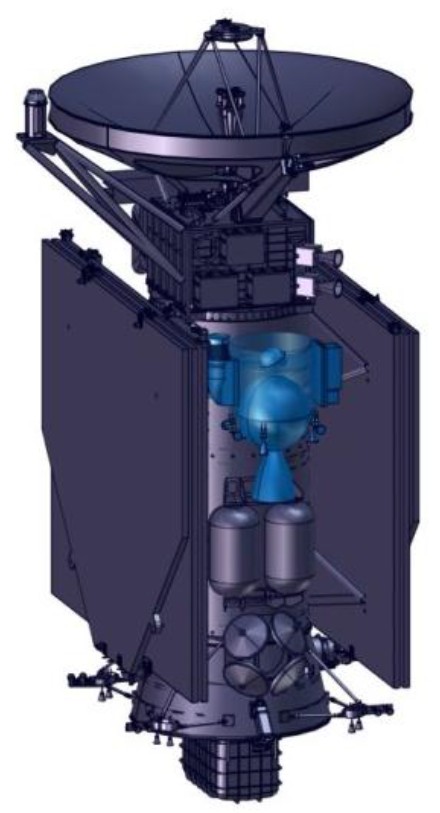 |
|
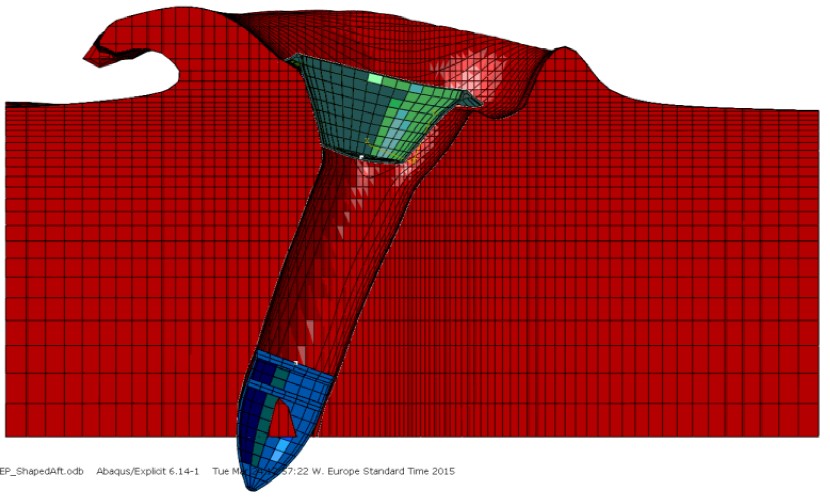
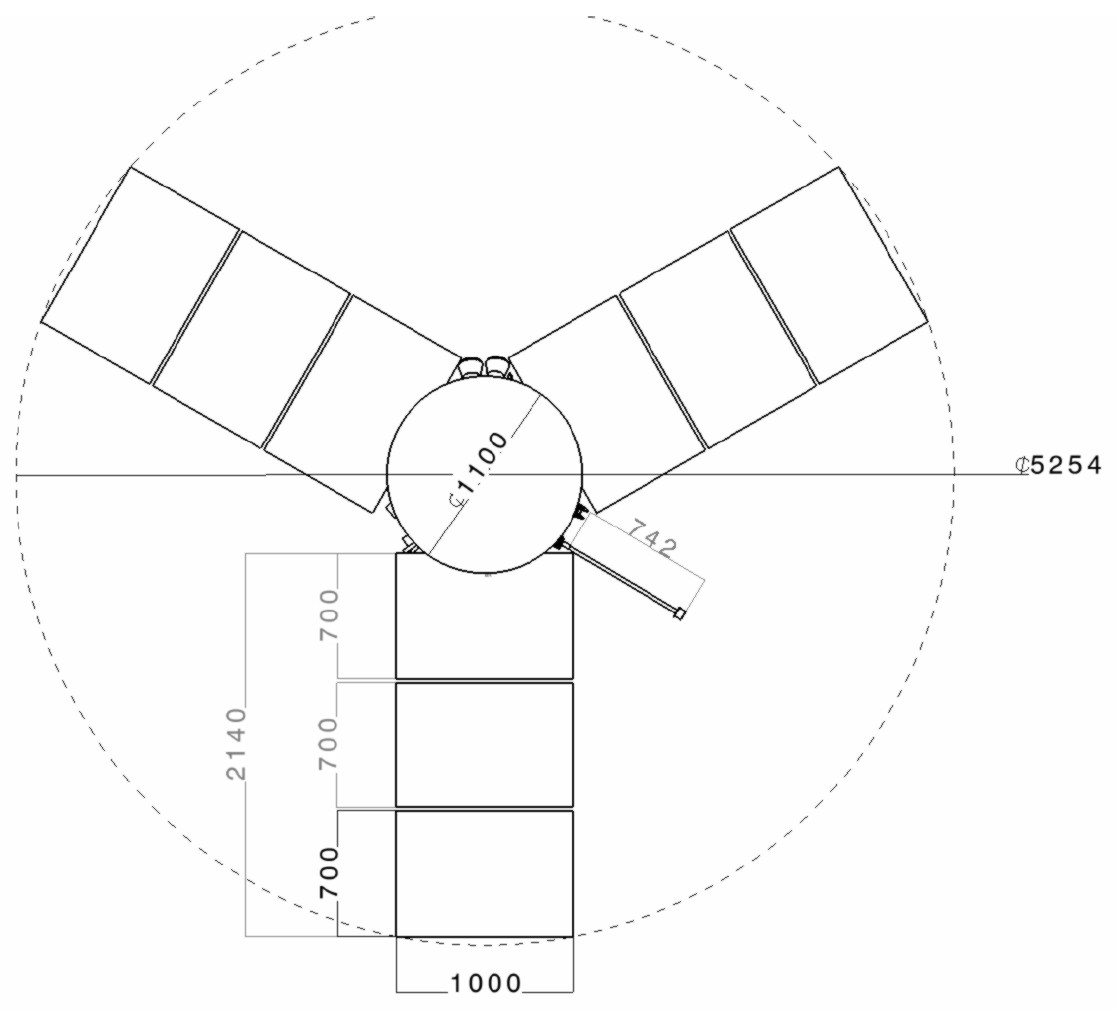 |
|
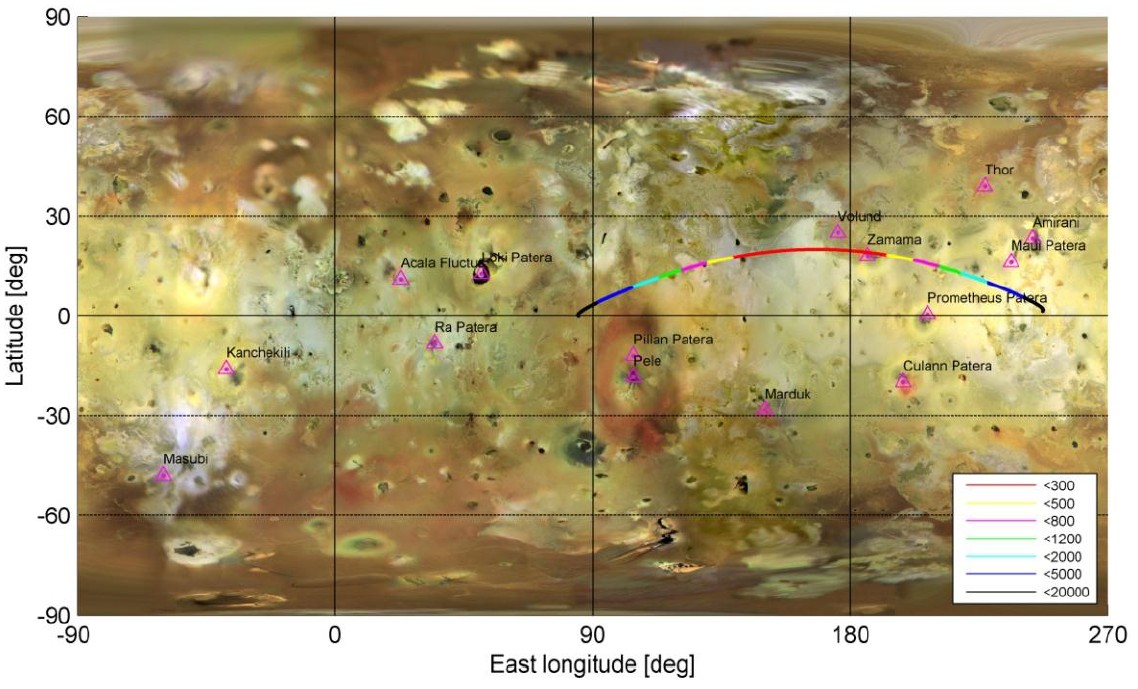
Future Planetary Exploration: "A Lander for NASA’s Europa Mission"
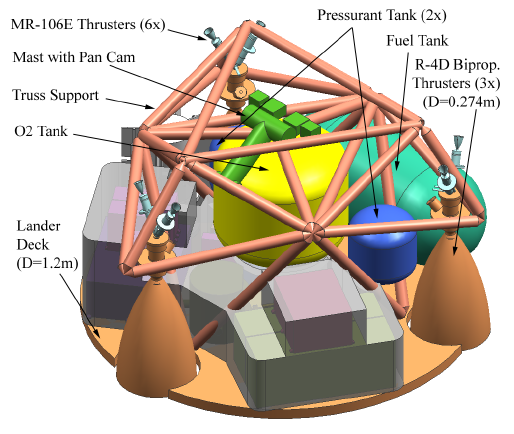 "In the mid-2000s, NASA studied a small Europa lander that would have had similar mass and capabilities to those reportedly be considered for the approved Europa mission. Credit: NASA/JPL."
"In the mid-2000s, NASA studied a small Europa lander that would have had similar mass and capabilities to those reportedly be considered for the approved Europa mission. Credit: NASA/JPL."




Future Planetary Exploration: "A Lander for NASA’s Europa Mission"
“This Act includes $1,631,000,000 for Planetary Science. Of this amount, $261,000,000 is for Outer Planets, of which $175,000,000 is for the Jupiter Europa clipper mission and clarifies that this mission shall include an orbiter with a lander that will include competitively selected instruments and that funds shall be used to finalize the mission design concept with a target launch date of 2022.”
“…$175,000,000 is for an orbiter with a lander to meet the science goals for the Jupiter Europa mission as outlined in the most recent planetary science decadal survey. That the National Aeronautics and Space Administration shall use the Space Launch System as the launch vehicle for the Jupiter Europa mission, plan for a launch no later than 2022, and include in the fiscal year 2017 budget the 5-year funding profile necessary to achieve these goals.”
- Final budget law for Fiscal Year 2016 regarding NASA’s Europa mission
While there’s at least eight years until it launches, this has been a pivotal year for developing NASA’s Europa mission. Last spring, NASA selected a rich and highly capable instrument set. This summer, following a design concept review, the mission moved from concept studies to an official mission. And just last week, Congress directed NASA to expand the mission by adding a small lander as well as launch the mission by 2022 and use the Space Launch System. These latter aren’t just suggestions: they are the law.
There’s been almost no official information on the lander. What we know comes from a long article from Ars Technica’s Eric Berger on the then possible addition of a lander and a dedicated plume flyby sub-satellite. Berger is a long time space reporter and has developed a good relationship with House Appropriations Subcommittee Chairman John Culberson (R-TX). (I make sure I read all of Berger’s articles.) As Berger describes in detail in his article, Culberson has been the driving force behind the aggressive funding for this mission.
In addition to an earlier launch, .Culberson also has wanted to see the mission carry a lander in addition to the mother craft that would make at least 45 close flybys of the moon. In prior years, Culberson added funding to NASA’s budget specifically to study a lander option, and the Jet Propulsion Laboratory’s engineers have been studying options. Berger’s story is focused more on Culberson, but it does provide a number of facts about the possible design for the lander:
“The leading concept for the lander would be a small lander, perhaps about 230 kg with 20-30 kg for instruments. For comparison, the 1996 Mars Pathfinder lander had a mass of 265 kg.
The lander would be delivered to Jovian orbit by the main spacecraft and then released in a high parking orbit well outside the intense radiation fields at Europa’s orbit. The main spacecraft would study Europa’s surface for two to three years during its flybys to find the best combination of a scientifically interesting and safe landing spot.
The actual landing would use the same skycrane approach used by the Curiosity Mars mission to deliver the lander safely to the surface.
The lander would likely last perhaps 10 days on the surface using battery power. During the lander’s lifetime, it would investigate the chemistry of the surface using a mass spectrometer and possibly a Raman spectrometer.
A lander could add $700M or more to the mission cost. The last cost estimate I heard for just the main spacecraft was $2.1B. We don’t know how firm the lander cost estimate is.
Adding a lander would delay launch from a possible 2022 to 2023.”
[...]

Unstung
Active member
As a result of the new Ocean Worlds Program, NASA will be including Titan and Enceladus proposals in the next New Frontiers mission. As for Europa, the Planetary Science program is still not certain of which booster will be used. According to Van Kane, the idea for an ESA daughter spacecraft has actually been dropped. This will enable a four-and-a-half year EGA trajectory to Jupiter using a Delta IV Heavy.
Future Planetary Exploration: "Defining the Missions for the Ocean Worlds"
 "The current baseline plan for launching the Europa multiple flyby mission is the Space Launch System. A new backup plan under consideration could reduce the alternative flight from over seven years to less than five years. Credit: NASA/JPL"
"The current baseline plan for launching the Europa multiple flyby mission is the Space Launch System. A new backup plan under consideration could reduce the alternative flight from over seven years to less than five years. Credit: NASA/JPL"
Presentations:
http://www.lpi.usra.edu/opag/meetings/jul2013/presentations/Clipper_Summary.pdf
http://sites.nationalacademies.org/cs/groups/ssbsite/documents/webpage/ssb_169419.pdf
---------- Post added at 09:14 PM ---------- Previous post was at 09:14 PM ----------
I better not forget the lander!
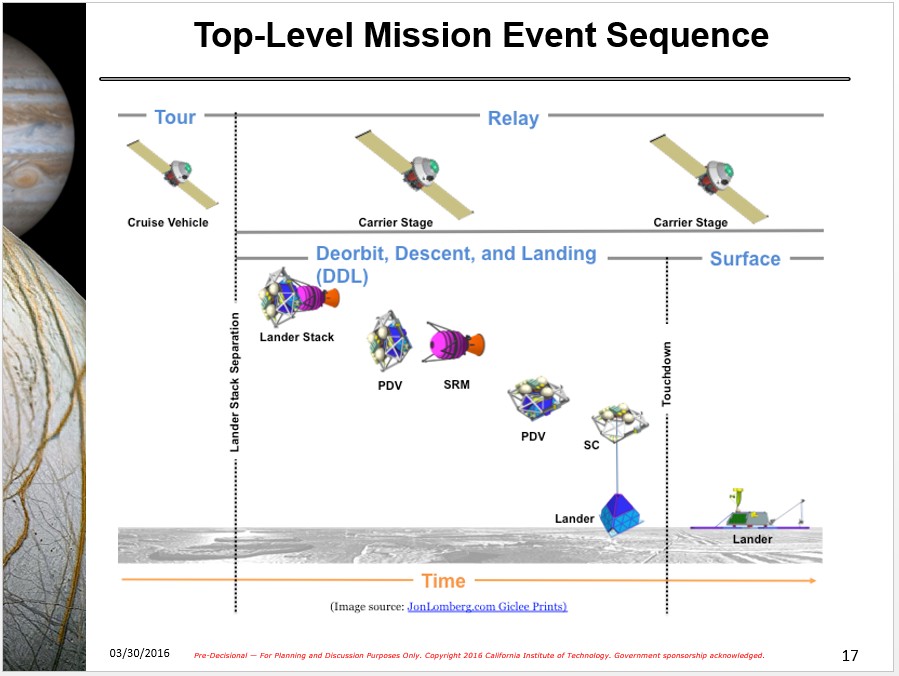 |
|
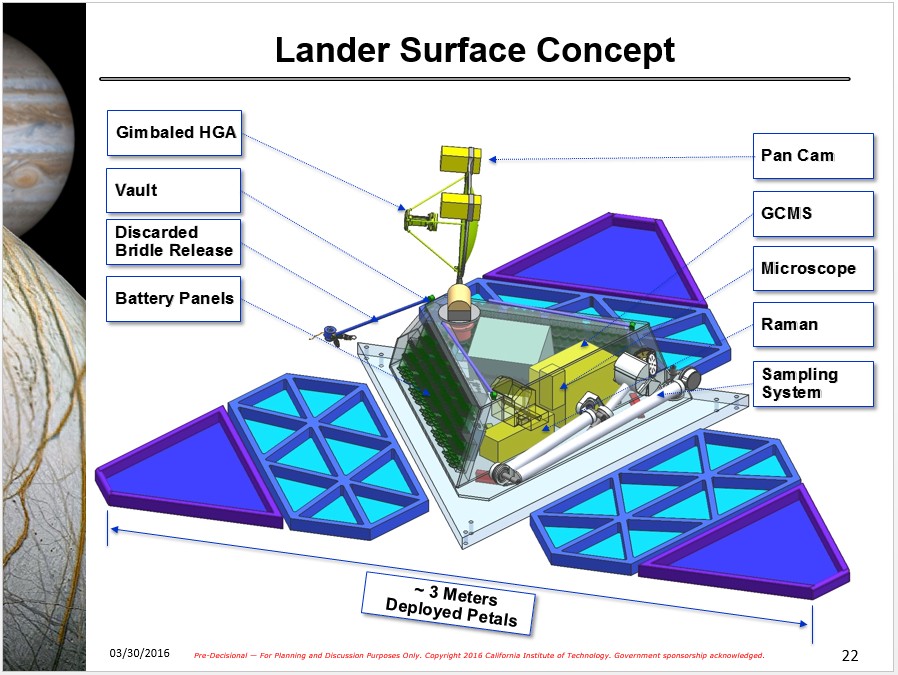 "A Europa lander, whose design could be used for landing on other ocean worlds, would consist of four major elements, a carrier craft that would also relay the lander's data, a solid rocket motor to slow the lander, a sky crane descent stage, and the lander itself."
|
There's no caption for this so, yo dawg, I think that's a pretty slick Pathfinder-esque lander. Not only is it gonna violate David Bowieman's orders, it may even drill into the forbidden world. That's like far out. Star Child gonna be mad. Do people even read this anyways?
"A Europa lander, whose design could be used for landing on other ocean worlds, would consist of four major elements, a carrier craft that would also relay the lander's data, a solid rocket motor to slow the lander, a sky crane descent stage, and the lander itself."
|
There's no caption for this so, yo dawg, I think that's a pretty slick Pathfinder-esque lander. Not only is it gonna violate David Bowieman's orders, it may even drill into the forbidden world. That's like far out. Star Child gonna be mad. Do people even read this anyways?
Future Planetary Exploration: "Defining the Missions for the Ocean Worlds"
[...]
The only currently approved mission in the Ocean Worlds program is the Europa multi-flyby spacecraft. This mission, estimated to cost ~$2 billion, will orbit Jupiter and will take approximately 45 toe dips into the high radiation belts surrounding this moon to make close flybys. In between flybys, the spacecraft will have time to transmit the volumes of data it collected up close back to Earth. (This presentation gives a good overview of the mission design and science goals while this presentation summarizes the instrument payload.)
The mission is well into its design phase. At the CAPS meeting, the project manager, Barry Goldstein with the Jet Propulsion Laboratory, updated the committee members on refinements to the design.
Until recently, NASA’s managers had hoped that the main spacecraft could carry a 250 kilogram free flying daughter spacecraft to conduct complimentary studies. Ideas ranged from a simple Europa lander, to a spacecraft that would divert to flyby the volcanic moon Io, to a spacecraft dedicated to flying through any plumes ejecting material from the surface of Europa. NASA had invited the European Space Agency to propose (and pay for) a daughter spacecraft. In addition, a group at NASA’s Goddard Space Flight Center had developed a proposal for a free flyer that would swoop even lower to the surface than the main spacecraft to fly through any plumes while carrying a mass spectrometer more tuned to identifying bio signatures than the main spacecraft’s instruments.
Unfortunately, it appears that NASA has decided to drop the idea of a daughter spacecraft. I’m told that ESA’s managers determined that they had no way to fund such a spacecraft on the timeline for the Europa mission. NASA’s managers may have also decided they lacked the funding to build their own daughter spacecraft.
[...]

Presentations:
http://www.lpi.usra.edu/opag/meetings/jul2013/presentations/Clipper_Summary.pdf
http://sites.nationalacademies.org/cs/groups/ssbsite/documents/webpage/ssb_169419.pdf
---------- Post added at 09:14 PM ---------- Previous post was at 09:14 PM ----------
I better not forget the lander!
[...]
In addition to providing an update to the Europa multiple flyby mission, JPL’s Goldstein provided the first public look at the current concept for a Europa lander. In the normal progression of exploring a world, NASA would not look at detailed plans for lander until the results from a mission orbiting that world (replaced with multiple flybys for Europa) were in. However, Congress has directed NASA to add a lander to the currently planned Europa mission.
JPL’s engineers have decided to make the lander an entirely separate spacecraft from the multi-flyby spacecraft. To find the spot on this moon that best combines scientific value and landing safety, the multi-flyby spacecraft must first complete its examination of the surface. As a result, a landing would come at least two to three years after the arrival of the multi-flyby spacecraft. The lander spacecraft could either launch with the multi-flyby spacecraft and park itself in Jovian orbit while waiting for the reconnaissance to be complete or the lander could be launch later. (I’m betting on the latter. NASA’s Green described the current design state of the lander concept as “immature” and it’s not clear that NASA will receive sufficient time or funding to mature the design in time for launch with the multi-flyby spacecraft.)
The lander itself would look much like and be about the size of the Mars Pathfinder that landed on the Red planet in 1997 (but without the Pathfinder’s small rover). The lander would be encased in petals that would deploy, allowing the lander to right itself if necessary after touchdown and that could also act as “snowshoes” in case the landing is on a soft surface. A mass spectrometer and a Raman spectrometer would study the composition of the surface material, panoramic and microscopic cameras would provide context and close up images, and a geophone would provide seismic measurements. The lander would include an arm that could scoop or drill samples from the surface to deliver to the instruments. Batteries would power the lander for up to 21 days.
While the initial target for this lander design is Europa, Goldstein pointed out that the design could be used to land on a number of ocean worlds including Enceladus and Jupiter’s Ganymede. (As discussed above, a Titan lander will need enter and descend through a thick atmosphere and then float on a sea. Its design is likely to be quite different.) Perhaps, if the funding gods are kind, we could see both multiple flyby missions to these moons and landers for these moons launch in the next decade or two.
[...]


Last edited:
NASA "Europa Clipper" Flyby Mission Updates

NASA: https://www.nasa.gov/feature/jpl/nasas-europa-flyby-mission-moves-into-design-phase
Mission Info:

NASA: https://www.nasa.gov/feature/jpl/nasas-europa-flyby-mission-moves-into-design-phase
A mission to examine the habitability of Jupiter's ocean-bearing moon Europa is taking one step closer to the launchpad, with the recent completion of a major NASA review.
On Feb. 15, NASA's Europa multiple-flyby mission successfully completed its Key Decision Point-B review. This NASA decision permits the mission to move forward into its preliminary design phase, known as "Phase B," beginning on Feb. 27.
A highlight of Phase A was the selection and accommodation of 10 instruments being developed to study the scientific mysteries of Europa. The new mission phase is planned to continue through September 2018, and will result in the completion of a preliminary design for the mission's systems and subsystems. Some testing of spacecraft components, including solar cells and science instrument detectors, has already been underway during Phase A, and this work is planned to continue into Phase B.
In addition, during Phase B subsystem vendors will be selected, as well as prototype hardware elements for the science instruments. Spacecraft subassemblies will be built and tested as well.
Mission Info:
The Europa mission spacecraft is being planned for launch in the 2020s, arriving in the Jupiter system after a journey of several years. The spacecraft would orbit Jupiter as frequently as every two weeks, providing many opportunities for close flybys of Europa. The mission plan includes 40 to 45 flybys in the prime mission, during which the spacecraft would image the moon's icy surface at high resolution and investigate its composition and the structure of its interior and icy shell.
Last edited:
And we call it Europa Clipper!
https://www.nasa.gov/feature/jpl/nasa-mission-named-europa-clipper

Details:
https://www.nasa.gov/feature/jpl/nasa-mission-named-europa-clipper
NASA's upcoming mission to investigate the habitability of Jupiter's icy moon Europa now has a formal name: Europa Clipper.
The moniker harkens back to the clipper ships that sailed across the oceans of Earth in the 19th century. Clipper ships were streamlined, three-masted sailing vessels renowned for their grace and swiftness. These ships rapidly shuttled tea and other goods back and forth across the Atlantic Ocean and around globe.
In the grand tradition of these classic ships, the Europa Clipper spacecraft would sail past Europa at a rapid cadence, as frequently as every two weeks, providing many opportunities to investigate the moon up close. The prime mission plan includes 40 to 45 flybys, during which the spacecraft would image the moon's icy surface at high resolution and investigate its composition and the structure of its interior and icy shell.

Details:
"During each orbit, the spacecraft spends only a short time within the challenging radiation environment near Europa. It speeds past, gathers a huge amount of science data, then sails on out of there," said Robert Pappalardo, Europa Clipper project scientist at NASA's Jet Propulsion Laboratory in Pasadena, California.
Previously, when the mission was still in the conceptual phase, it was sometimes informally called Europa Clipper, but NASA has now adopted that name as the former title for the mission.
The mission is being planned for launch in the 2020s, arriving in the Jupiter system after a journey of several years.
boogabooga
Bug Crusher
- Joined
- Apr 16, 2011
- Messages
- 2,999
- Reaction score
- 1
- Points
- 0
I'm sure the name will get changed again after the budget and scope of mission ebb and flow over the next decade.
Similar threads
- Replies
- 7
- Views
- 1K
- Replies
- 14
- Views
- 2K
- Replies
- 12
- Views
- 3K
